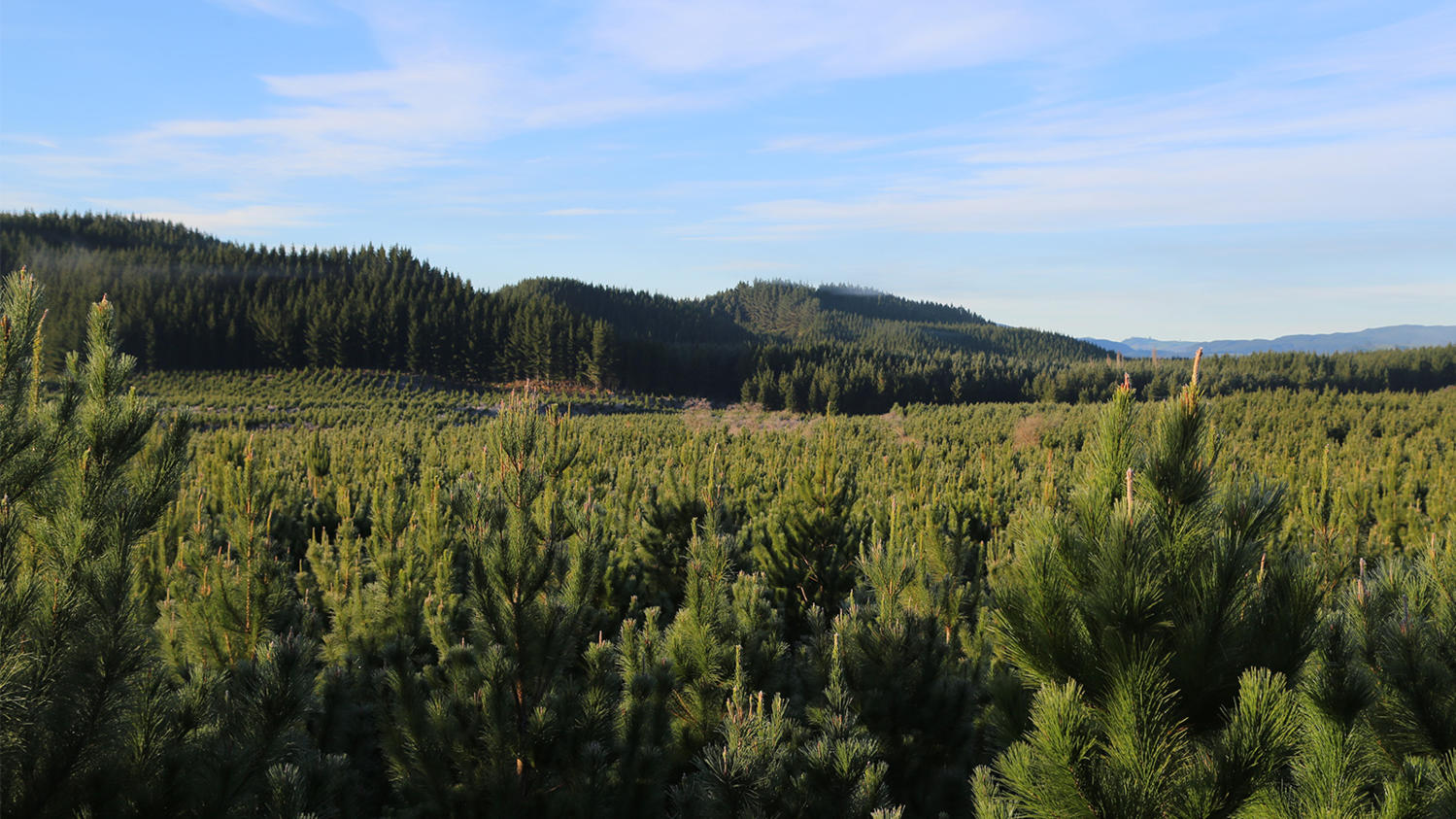Hancock Natural Resource Group: Ecosystem Services from Plantations Forestry in New Zealand

Hancock Forest Management – New Zealand (HFM NZ) is a wholly owned subsidiary of Hancock Natural Resources Group (HNRG), a global farmland and timberland investment portfolio development and management company. HFM NZ manages approximately 198,000 hectares of land in New Zealand on behalf of two forest investment entities. Of this total area, 165,000 hectares is managed as productive plantation forestry land (mostly radiata pine), and approximately 26,000 hectares as protected indigenous plant reserves.
HFM NZ has completed an annual carbon accounting report since 2008 as part of HNRG’s carbon accounting protocol. The aim of this protocol is to measure and consistently report the net greenhouse gas impacts across its global timberland estate.
Through representation on various New Zealand forest research and industry committees, HFM NZ is also involved in or exposed to projects on valuing ecosystem services from plantation forestry, including water quality, avoided erosion, recreation and biodiversity.
Why a natural capital assessment?
HFM NZ’s conducted a natural capital assessment to become more familiar with the natural capital assessment process and the information and data that is required to provide any future robust estimates of natural capital.
What was the Protocol or the Sector Guide used for?
HFM NZ’s natural capital assessment was focused on the largest region within the HFM NZ estate (110,000 hectares) and on four key ecosystem services that plantation forestry provides; carbon sequestration, water quality, recreation and biodiversity.
The Protocol was useful in providing an overall view of the process for determining natural capital for the forest sector. For specific process and region relevant information, this case study relied on other New Zealand forestry and primary industry natural capital (ecosystem services) projects.
How did you conduct your assessment?
The objective was to estimate the impact of plantation forestry (in the area of interest) on the four key ecosystems services - carbon sequestration, water quality, recreation and biodiversity. In the case of water quality, comparisons were made with potential alternative land uses such as dairy or drystock farming.
This was achieved by quantifying the leading indicators for each of these ecosystem services - tonnes of carbon sequestered, kg/N leached per hectare/year, use days, and area of indigenous reserves; respectively.
Where possible the actual or potential value of the service was monetized. For example, while there is no current nitrogen trading scheme for improving water quality within the area of interest, a nitrogen trading price was used from another scheme within an adjacent region in New Zealand. Zealand has had an Emissions Trading Scheme (carbon dioxide) since 2008 with prices for NZ Units. Forestry is a significant participant (a net sink) in this scheme. Also, a nitrogen trading scheme within the Lake Taupo catchment, with prices for kilograms of nitrogen permanently reduced, has been fully operational since 2011 (the world’s first non-point source to non-point source, cap and trade scheme).
What were the outcomes of the assessment?
The results in this case study were not unexpected as the New Zealand forest industry has been reasonably exposed to the idea of natural capital assessments and the impact forestry has as a land use on certain ecosystems services, including, in some cases, the potential or actual monetary impact.
In most instances, quantification of ecosystem services was achievable, due to the detailed forest information maintained by HFM NZ. The main exception was quantification of threatened species utilising the forest, which we recognize as a natural capital source of biodiversity.
Finding sources for valuation for ecosystem services was a challenge. We found that market-values are available for some impacts (such as GHG emissions or nitrogen leaching) but recognize that finding the wider social values can require additional sources, expertise and research.
To undertake natural capital accounts for the full HFM NZ estate would require further background work to attempt to verify and fine tune values that could be used with more confidence. The valuations do however give the sense of the potentially significant magnitude of the value of ecosystem services provided by the plantation forest estate, that are not accounted for in mainstream market values.
Next steps
Pilot testing results will be incorporated into discussions related to HNRG’s overall sustainability and responsible investing program. Any specific natural capital assessments will be done at the request of a client, to better understand non-core asset value (e.g., recreation), or as a future component of HNRG’s sustainability program.

